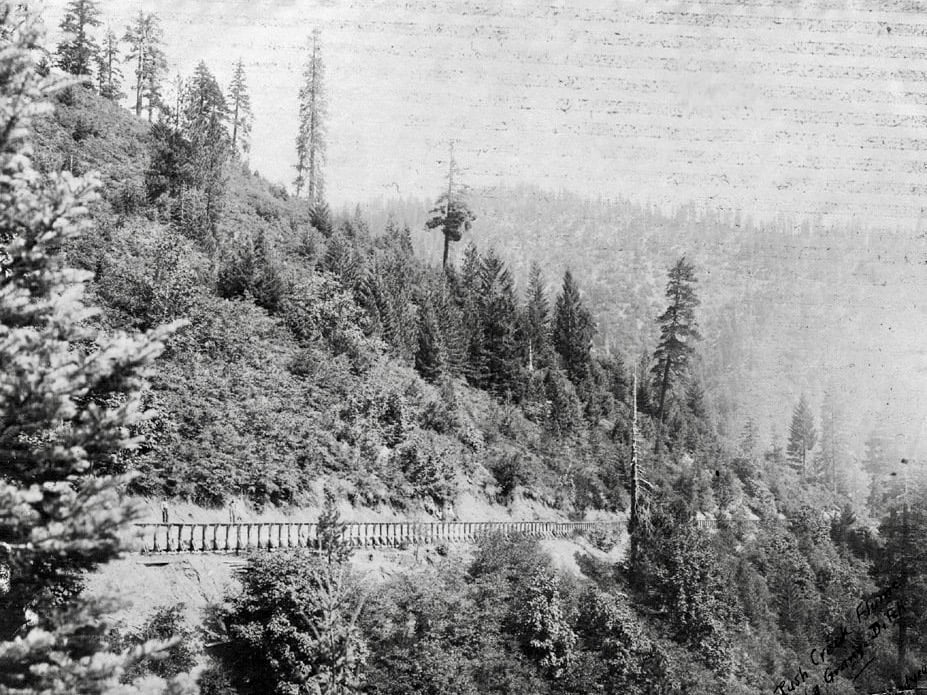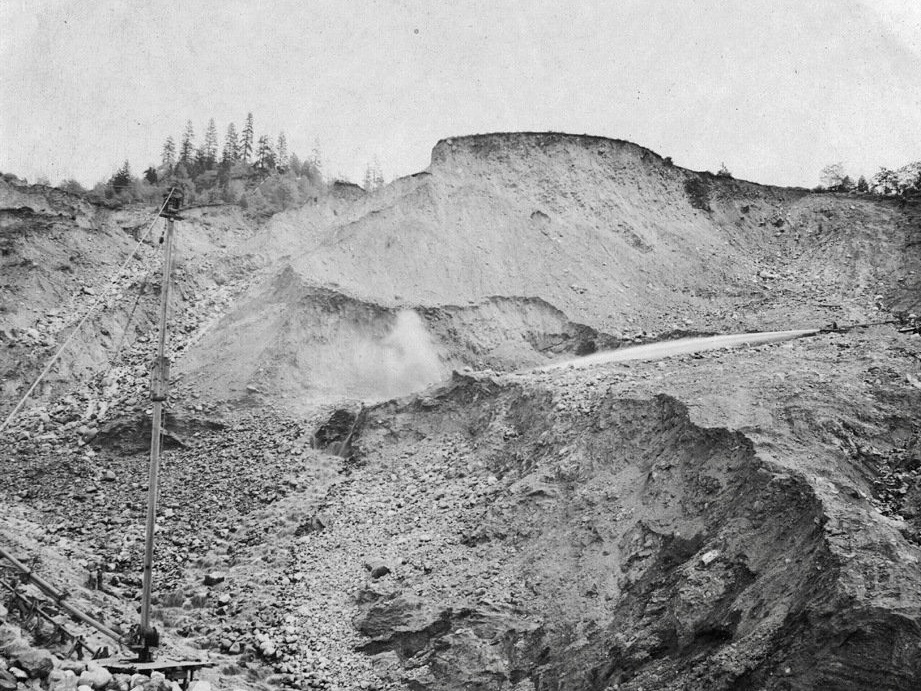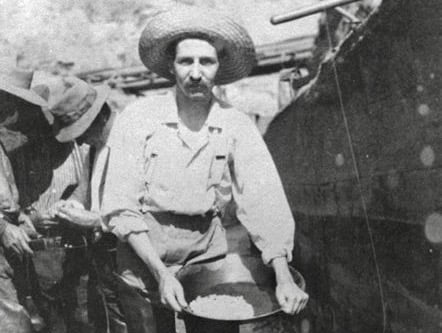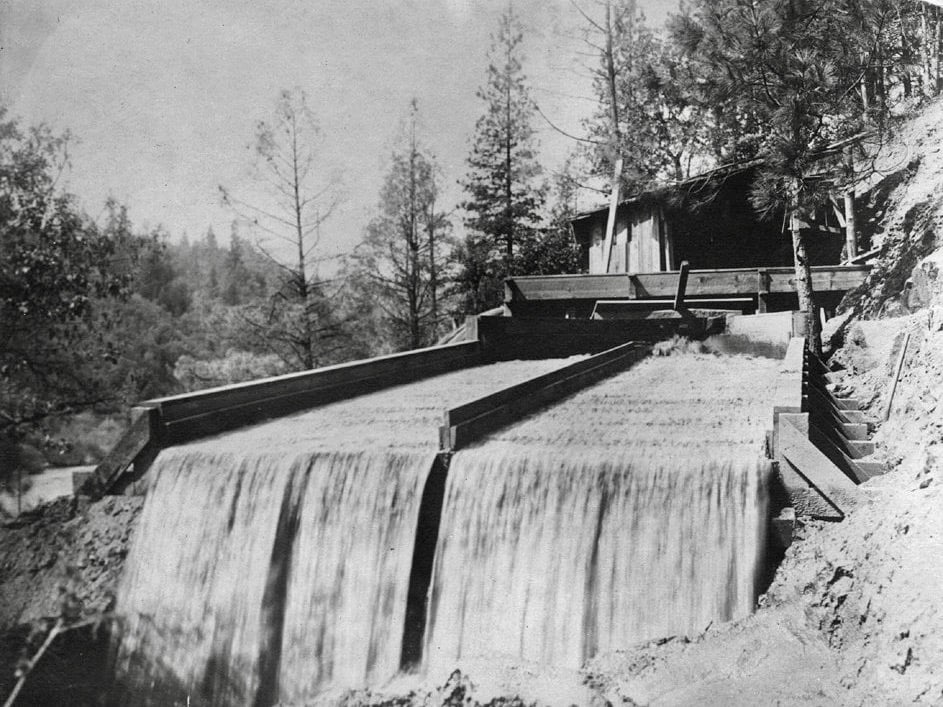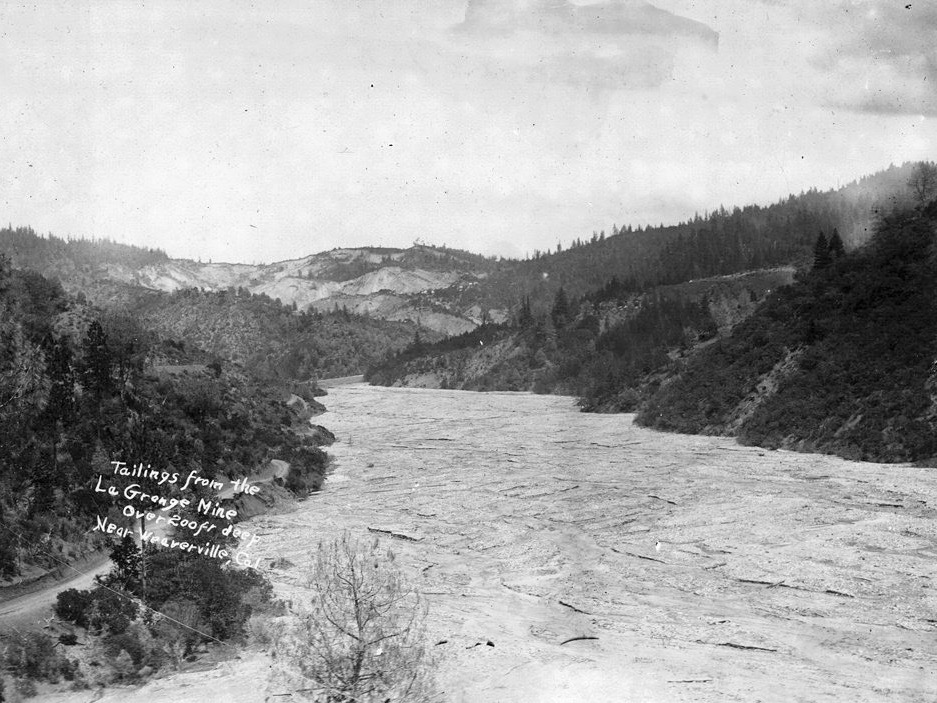La Grange Mine
Highway 299
Weaverville, California
(40°44’18.4″N 122°59’45.5″W)
Hours
Not Applicable
Admission
Free
On a pullout from Highway 299 in Trinity County is the largest hydraulic mine in California. Little remains of the operation aside from a monitor and four interpretive displays. Yet, the La Grange Mine looms large in gold mining history.

History of the La Grange Mine
The origins of the La Grange Mine can be traced back to a group of gold mining claims on Oregon Mountain. The mine’s current name comes from Ernest de la Grange, the French baron who owned the mine in when it was bought by the LaGrange Hydraulic Gold Mining Company in 1892. The Baron and his family settled in the United States, leaving behind and politically unstable France. Similar to contemporaries such as Theodor Roosevelt, La Grange searched for an outdoorsman lifestyle. He traveled the western US and eventually settled in Weaverville, California upon purchasing the mine. He and the Baroness Clementine de La Grange we active partners in the mine and built their home “The Castle” overlooking the operation.
The LaGrange Hydraulic Gold Mining Company took the relatively low grade diggings of Oregon Mountain and built a profitable operation by transporting water 29 miles from Stuart’s Fork to power hydraulic mining of La Grange. The mine benefited from the forced closure of similar hydraulic mines in the Sierra Nevadas, such as the Malakoff Diggins. Much of the talent from these closed mines found their way over to the still running La Grange Mine.
Over the mine’s 26 years in operation, monitors washed away 100 million yards of gravel, 90% of the Oregon Mountain,* in search of gold. The mine closed 1918 when post WWI steel and labor costs made operation too expensive. By then, the mine had yielded $3.5 million in gold.
La Grange Mine Today
The site of the former mine is designated as a California Historical Landmark kn 1962. What is left of the mine is an pullout along Highway 299. A monitor and four interpretive displays discuss the wealth that moved mountains.
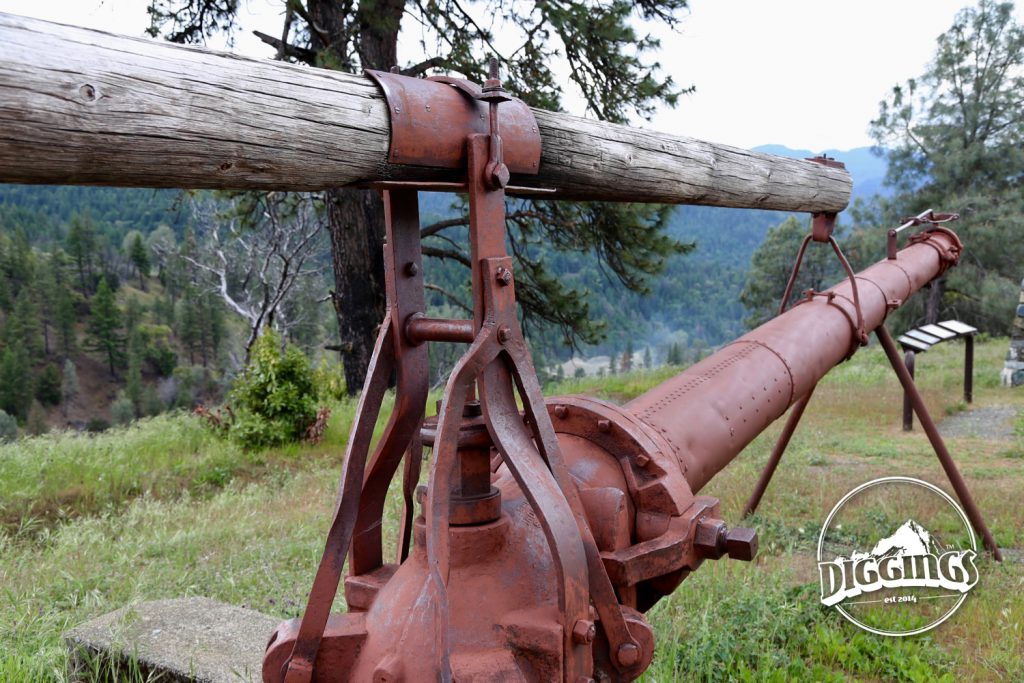
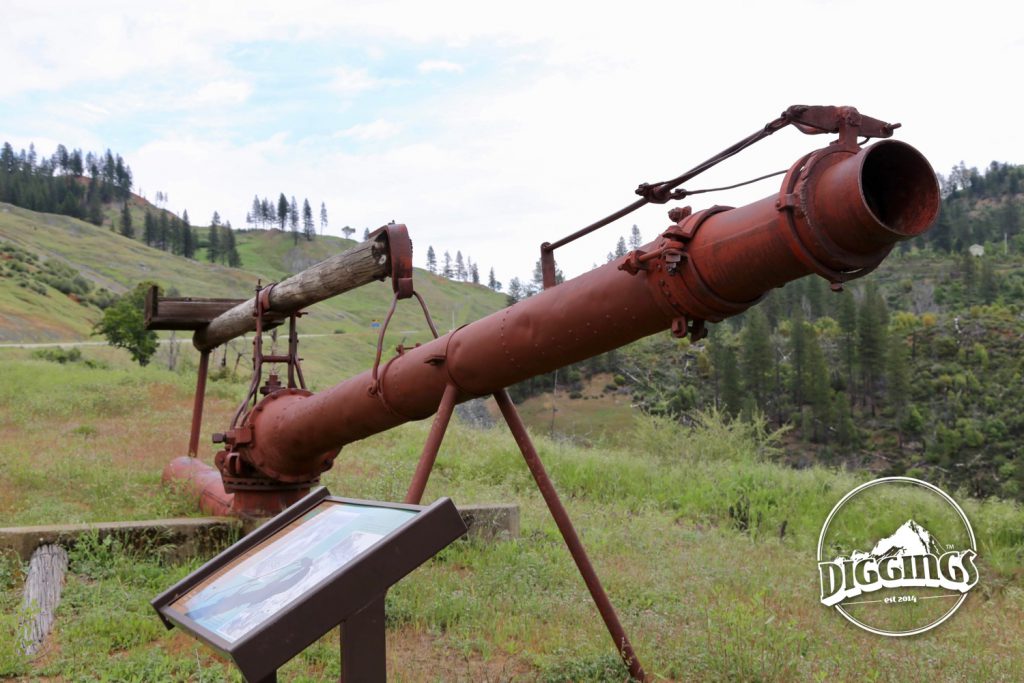
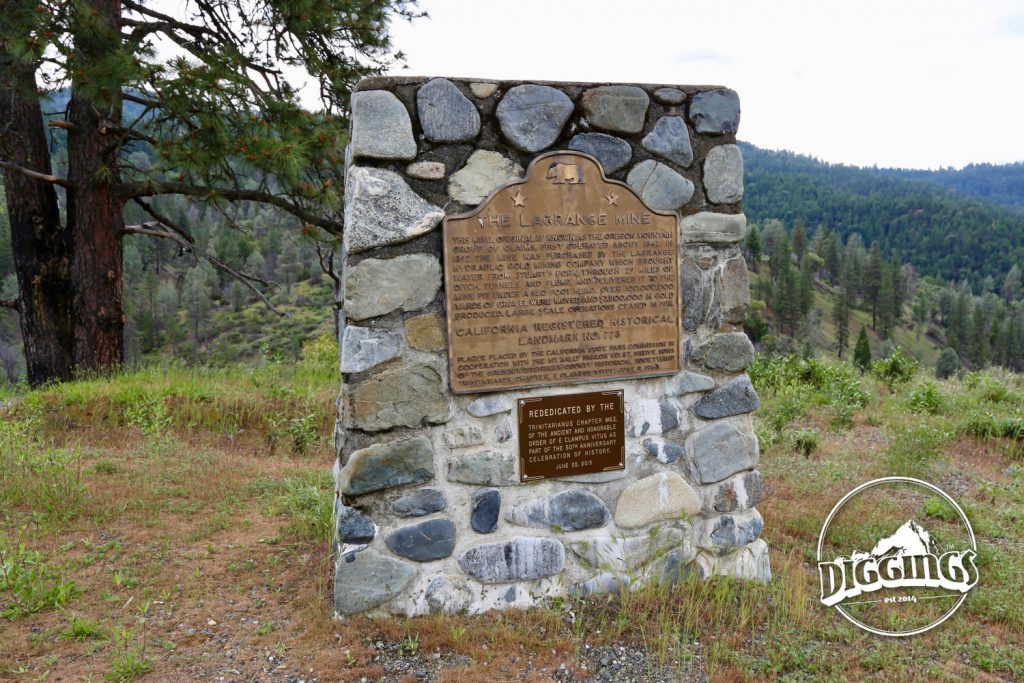
* In a surprising coda to Oregon Mountain’s hydraulic history, the remaining 10% of the mountain was washed away over a 5 year period as part of the California Department of Transportation’s creation of Highway 299, completed in 1939.

